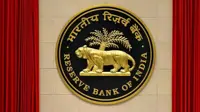Sand dunes in the wild
By Shwetha Amit | 02 Dec 2008
We had heard a lot about the land of camels and sand dunes and this created an enchanting vision of Jaisalmer.
When we reached Jaisalmer, the view was breathtaking as sand dunes unfolded before us almost like a live encounter with the tales of the Arabian Nights.
Situated in the heart of the Thar Desert, Jaisalmer has its own share of sightseeing spots.
Not to be outdone with its counterpart regions in Rajasthan, the Havelis, fort and Gadi Sagar Lake add charm to this sandstone city. Added to which, the story behind every monument made it even more intriguing. Starting with the first glimpse of the famous lake, our journey began from a learning experience and ended with an adventurous streak.
Lake and boat rides
 The glistening waters of Gadi Sagar Lake in the morning gave it a mystic look. A chirpy narration by the locals gave us knowledge of it not only being a popular tourist attraction but also the only source of water during bygone days. A 30-minute boat ride cost us Rs100 and gave us a super view of the archaic monuments surrounding it. Birds flocked all around us for a water. We were also given the choice of feeding the rather healthy looking fresh water fish by purchasing bread for Rs.10 from the vendors in the vicinity.
The glistening waters of Gadi Sagar Lake in the morning gave it a mystic look. A chirpy narration by the locals gave us knowledge of it not only being a popular tourist attraction but also the only source of water during bygone days. A 30-minute boat ride cost us Rs100 and gave us a super view of the archaic monuments surrounding it. Birds flocked all around us for a water. We were also given the choice of feeding the rather healthy looking fresh water fish by purchasing bread for Rs.10 from the vendors in the vicinity.
Haveli of the rich
 Located in a narrow lane was the Patwon ki Haveli. We were reminded of the saying 'small things come in big packages'. The elegantly designed havelis of Jaisalmer were very alluring, with fine architecture and intricate carvings that contribute to the pride of Jaisalmer. The five mansions were constructed by five traders of those times.
Located in a narrow lane was the Patwon ki Haveli. We were reminded of the saying 'small things come in big packages'. The elegantly designed havelis of Jaisalmer were very alluring, with fine architecture and intricate carvings that contribute to the pride of Jaisalmer. The five mansions were constructed by five traders of those times.
A glimpse into the lifestyle of the elite proved to be fascinating and interesting. Each room though abandoned now, carried tremendous intensity and depth that only made us stare in awe. The drawing rooms, the cloth chess board, the kitchen, the array of turbans displayed the royalty of their times.
The 'Pagdis'were an indication of caste, religion, place and practices. In a way, the haunting element brought about the ghosts of the pasts and as we stepped out, we half expected to see royalty wave good bye from the mysterious windows that adorned these mansions.
A residential forte
 We were taken to one of the ancient monuments, the Jaisalmer fort, which surrounds the Trikuta hill. The uniqueness of this monument is that locals still inhabit the fort, hence it is known as the living fort. Built by Rawal Jaisal, its unique golden colour gives it another name - the 'Golden fort'. We were quite surprised by its four gates and the specialty is that each one is not visible from the other. As we were further taken inside, the inner compound seemed like a small town by itself with bustling activities and small shops that sold souvenirs. Cycles and auto rickshaws whizzed past us in a hurry.
We were taken to one of the ancient monuments, the Jaisalmer fort, which surrounds the Trikuta hill. The uniqueness of this monument is that locals still inhabit the fort, hence it is known as the living fort. Built by Rawal Jaisal, its unique golden colour gives it another name - the 'Golden fort'. We were quite surprised by its four gates and the specialty is that each one is not visible from the other. As we were further taken inside, the inner compound seemed like a small town by itself with bustling activities and small shops that sold souvenirs. Cycles and auto rickshaws whizzed past us in a hurry.
The fort also housed a number of temples. While the main temple was that of the Kali goddess, quite a few Jain temples also prevailed, and each had a significant story behind their existence.
Sands of times
 Located about 45 kms from Jaisalmer are the Sam sand dunes. This was undoubtedly one of the best experiences as it gave us a taste of the real and raw Rajasthan. An half-an-hour drive by cab gave us a quick glimpse of the areas around Jaisalmer such as the Amar Sagar where a Jain temple is situated.
Located about 45 kms from Jaisalmer are the Sam sand dunes. This was undoubtedly one of the best experiences as it gave us a taste of the real and raw Rajasthan. An half-an-hour drive by cab gave us a quick glimpse of the areas around Jaisalmer such as the Amar Sagar where a Jain temple is situated.
After passing a few villages, the landscape became quite deserted and there was just a sprinkling of a few huts. As we reached the Sam village, numerous camels dressed up with colourful tassels were waiting to take us deep into the dunes.
From there on began an adventurous spree amidst the smooth silken sand. The view was picturesque with heaps of sands adjoined with one another like tiny mountain ranges. As we slowly cruised across the vast area, we managed to catch sight of a few spotted deer that sprinted across.
We were told that the desert national park was nearby. Our two hour ride was nearing its completion with the halt at the sunset view which was beautiful beyond words. The golden sinking sun managed to cast a spell over the fine dunes as the entire area seemed like a golden carpet. As we headed back, the Rs400 shelled out seemed nothing in comparison to the exhilarating time we had. This was later followed by a spectacular dance show and singing and a lavish feast spread for dinner.
Bordering by national spirituality
The adventurous stint continued as we decided to drive down to Tanot which is about 110 kms from Jaisalmer. Being a two hour drive, we started off quite early. We learnt that being close to the border, only Indian nationals were allowed and if one wanted to go beyond this point, the Collector's permission was compulsory.
No accommodation was available for tourists and it was usually planned as a one-day trip. On the way, we managed to see the depth of the barren lands spread in bountiful acres. The severity in the landscapes was depicted as we drove further down. As we reached the temple, we observed the Border Security Force in full form. We were told astounding stories on grit and valour of the Indian Army which made us proud.
The Tanot Mata temple has a beautiful story behind it. During the 1965 war over 4000 bombs were apparently hurled from Pakistan but miraculously none failed to affect the temple and the area surrounding it. The bombs are preserved even now. It is believed that the divine intervention of Tanot Mata was what shielded this portion and brought us victory. The cab ride costs around Rs 1500 but is value for money.
How to reach Jaisalmer
You can reach Jaisalmer from Delhi, Jaipur or Jodhpur. There are several flights from Delhi, Jaipur and Jodhpur. From Jaipur and Jodhpur, one can choose to either travel by road or rail depending on convenience.
By Road
Jaisalmer is about 5 hours drive from Jodhpur. You can hire a tourist cab. Tourist buses also ply frequently from Jodhpur and Jaipur.
By Rail
From Delhi: The Delhi-Jaisalmer Express leaves Delhi in the evening and reaches Jaisalmer the following afternoon.
From Jaipur: The Delhi-Jaisalmer Express halts at midnight at Jaipur and reaches Jaisalmer in the afternoon and is the most convenient.
From Jodhpur: The Jodhpur -Jaisalmer express leaves Jodhpur at 11:15 pm and reaches Jaisalmer at 5:15 am.
Within Jaisalmer
Being a tourist-friendly place, there is no dearth of cabs, but one needs to bargain. Sometimes the drivers prove to be tourist guides as well who are tech savvy and can be contacted via mobile.
Best time to visit:
October -March, the winter season, is deal to see Rajasthan. The pleasant temperature during the day around this time makes it ideal for sightseeing.

































